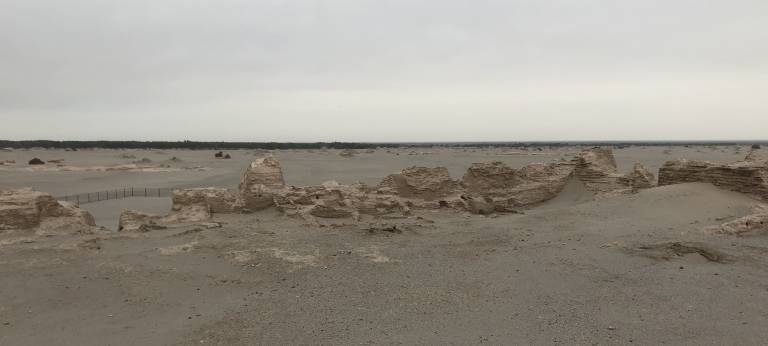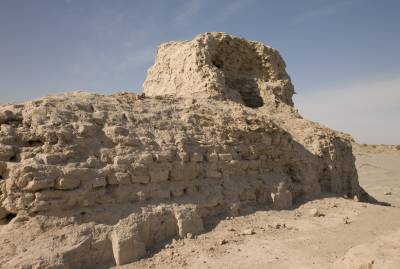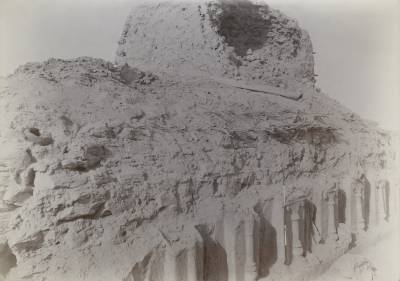The ancient city of Miran, Xinjiang Uyghur Autonomous Region, PR China

The ancient city of Miran lies on the very southern edge of the vast Taklamakan Desert, in modern-day Xinjiang, China. Miran was a vitally important oasis city on the Silk Roads, becoming a hub for cultural and economic exchanges between western China, Tibet and Central Asia in the 1st millennium CE.

Panoramic view of the sand blown landscape of the city of Miran, in 2018 (Photograph Yunxiao Liu).
Visited by the explorer Marco Polo, who knew the city as ‘Lop’, Miran later began to attract other interested parties from the late 19th century, excavated by both Sir Aurel Stein and the Japanese Otani Mission in the early 1900s. China’s own excavations were begun by the Chinese Academy of Social Sciences in the late 1950s, and the site has more recently been investigated by the Xinjiang Institute of Archaeology, who are working on a comprehensive publication.
The remains include the walled city, a Tibetan fort, Buddhist monastic sites, and complex irrigation systems. The site is covered by wind-blown sands, partially protecting it, partly eroding it. The site is difficult to understand now, obscured in part by the shifting sands. One of the aims of the CAAL project is to bring together the published and unpublished material on sites such as this, building a historic environment database to provide a solid platform for discussing how to conserve, manage and display such sites. We also need to understand more about the deterioration of this fragile earthen architecture: combining historic archaeological records with modern observations will enable us to explore these changes, and to better manage their change in the future.


A ruined shrine at Miran. Top: photographed in 1907 by Stein (© British Library Board Photograph 392/27(118), reproduced with permission). Bottom: the same site in 2012 (© British Library Board Photo 1125/16(149), reproduced with permission). The degradation, and loss of some features, is obvious, although some have been protected by reburial.
 Close
Close


